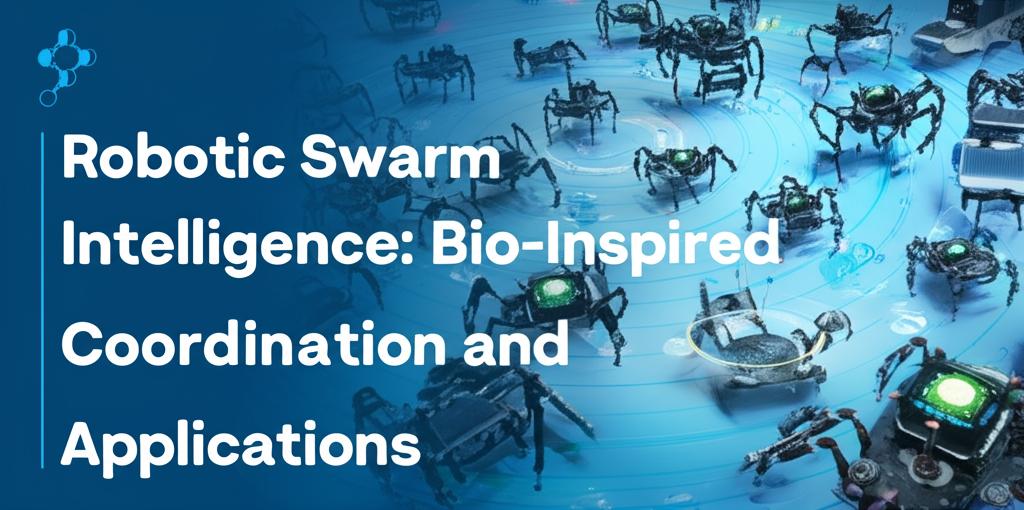Robotic swarm intelligence, a field drawing inspiration from the collective behavior of social creatures like ants, bees, and birds, is rapidly advancing. It revolves around the idea of multiple, often simple, robots working together to achieve complex goals that would be difficult or impossible for a single robot. This decentralized approach, where individual robots operate based on local information and interactions, leads to systems that are scalable, robust, and adaptable to changing environments.
At the heart of swarm robotics are bio-inspired algorithms. These algorithms mimic the natural communication and coordination strategies found in biological swarms. Examples include Ant Colony Optimization (ACO), Particle Swarm Optimization (PSO), Artificial Bee Colony (ABC), Firefly Algorithm (FA), Cuckoo Search (CS), and the Bat Algorithm (BA). These algorithms enable robots to collectively perform tasks such as path planning, task allocation, formation control, and decision-making without a central controller. Recent research has focused on enhancing these algorithms, for instance, by improving flocking algorithms for better obstacle avoidance and path planning in dynamic settings.
The applications of robotic swarm intelligence are diverse and expanding. They are being explored and implemented in:
- Search and Rescue: Swarms of robots can efficiently cover large and complex terrains to locate survivors in disaster-stricken areas like collapsed buildings or flooded regions.
- Environmental Monitoring: Robots can collaboratively monitor pollution levels, track changes in ecosystems (like coral reefs or marine biodiversity), and collect data in hard-to-reach areas such as dense forests.
- Agriculture: Swarms can perform tasks like precision crop monitoring, identifying plant health, weed management, and even harvesting, leading to increased efficiency and reduced reliance on manual labor and chemical herbicides.
- Logistics and Warehouse Management: Autonomous mobile robots (AMRs) operating as a swarm can efficiently handle materials, manage inventory, and optimize supply chain operations.
- Manufacturing: Swarm robots can work on assembly lines, transport materials, and perform collaborative tasks, leading to flexible and efficient manufacturing systems.
- Healthcare: Micro and nanorobots operating in swarms hold potential for targeted drug delivery, tissue repair, and minimally invasive surgeries.
- Military and Defense: Swarms are being developed for surveillance, reconnaissance, and coordinated operations in hazardous environments.
- Space Exploration: Robot swarms can be used for exploring unknown terrains and assisting in missions in space.
- Construction: Swarms can collaborate on tasks like bricklaying, material transport, and concrete pouring.
Despite significant progress, several challenges remain in the widespread adoption and development of robotic swarm intelligence:
- Scalability: Maintaining efficient coordination and communication as the number of robots in a swarm increases is complex.
- Robustness and Adaptability: Ensuring robots can operate reliably in unpredictable and dynamic real-world environments, handling sensor noise, communication failures, and individual robot malfunctions, is crucial.
- Design and Programming: Designing the individual robot behaviors so that the desired collective behavior emerges is a significant hurdle, as each robot acts on local information.
- Human-Swarm Interaction: Developing intuitive ways for humans to control, monitor, and interact with large swarms, especially in time-sensitive situations, needs further development.
- Communication: Enhancing communication protocols for more effective information sharing, especially in environments with limited bandwidth or high interference, is an ongoing area of research. This includes exploring decentralized communication methods where robots interact directly or indirectly through environmental cues (stigmergy).
- Security: As swarms become more interconnected, ensuring data integrity, confidentiality, and preventing malicious attacks or infiltration of the swarm is a critical concern.
- Real-world Implementation: Bridging the gap between simulations and successful deployment in complex, unpredictable real-world scenarios remains a challenge.
- Ethical Considerations: As with any autonomous technology, ethical implications regarding decision-making and control need careful consideration.
Future trends in robotic swarm intelligence point towards:
- Advanced AI and Machine Learning Integration: Incorporating deep learning and other advanced AI techniques will enhance the decision-making capabilities, learning, and adaptability of swarms.
- Hardware Miniaturization: Smaller and more versatile robots will enable applications in constrained environments, including medical applications within the human body.
- Heterogeneous Swarms: Systems composed of robots with diverse capabilities working together will allow for tackling more complex, multifaceted tasks.
- Improved Sensors: Enhanced sensor technology will allow robots to perceive their environment with greater accuracy and detail, improving their interaction and safety.
- Enhanced Communication Systems: Development of more robust and scalable networking protocols for better coordination.
- Autonomous Navigation: Continued focus on improving the ability of individual robots and the swarm to navigate complex environments autonomously.
In conclusion, robotic swarm intelligence, by drawing inspiration from nature's coordinated systems, is paving the way for innovative solutions to complex problems across numerous industries. While challenges remain, ongoing research and technological advancements in AI, hardware, and communication are continuously expanding the potential of this exciting field, promising a future where collaborative autonomous systems play an increasingly significant role.

